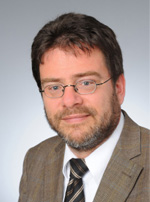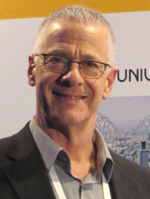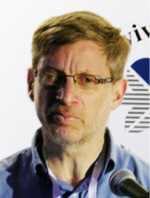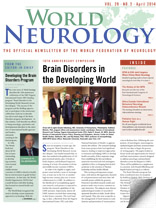The World Federation of Neurology (WFN) and the Department of Neurology of Mohamed V. Souissi University, Rabat, Morocco, announce a one-year Visiting Fellow Program for newly trained neurologists in Africa.
The Department of Neurology of MohamedV.SouissiUniversity is a WFN accredited teaching center.
The WFN has 117 member societies and aims to foster brain health worldwide, working in partnership with the World Health Organization (WHO), among others.
Project Description
Mohamed V. Souissi University would like to support the African initiative of the WFN by inviting an African colleague to participate in a one-year training course in clinical neurophysiology. The purpose is to experience the modern Moroccan medical system in an international environment, meet new colleagues and foster future cooperation.
The training course in clinical neurophysiology at the Mohamed V. Souissi University Department of Neurology will include electromyography, electroencephalography, epilepsy, neuropathy and muscle diseases. Teaching will be conducted in French.
Timeframe
The visit will take place for one academic year from September 2014 to June 2015.
Details About Support
The visiting Fellow will receive the following support:
- Reimbursement for one economy flight from the Fellow’s country of residence to Rabat and the return journey.
- Reimbursement of accommodations for the academic year.
- A monthly allowance for living expenses (food and beverage) during the academic year.
- Costs of health insurance and insurance for medical activity during the stay in Morocco (to be arranged by the applicant, the costs will be refunded).
- Note that support is provided for the visiting Fellow only, and does not include family or dependents. WFN is not responsible for financial issues other than related to the project.
Criteria for Applications
- The applicant must be a resident of a low or lower-middle income country from the African continent.
- The applicant must be born after Dec. 31,1974.
- The applicant must have recently completed his or her neurology training and be ranked first in his or her final evaluation of the last year of neurology training.
Evaluation Committee
Professor Wolfgang Grisold (Secretary Treasurer-General, WFN)
Professor Amadou Gallo Diop (WFN Trustee)
Professor Mostafa El Alaoui Faris (Head of Department Neurology and Neuropsychology, Mohamed V. Souissi University)
Professor Redouane Mrabet (President of Mohamed V SouissiUniversity)
Deadline for Application
To apply, applicants must submit their CV, a supporting statement and a letter of recommendation from the head of their department by April 21, 2014, by email to lkennedy@kenes.com
For any questions regarding your application, or to apply, please contact the administrative office of the WFN Education Committee:
Laura Kennedy
Project Coordinator – WFN
Kenes Associations Worldwide
1-3 Rue de Chantepoulet
P.O. Box 1726
CH-1211 Geneva 1
Switzerland
Email: lkennedy@kenes.com
Phone: +41 (0) 22 906 9165
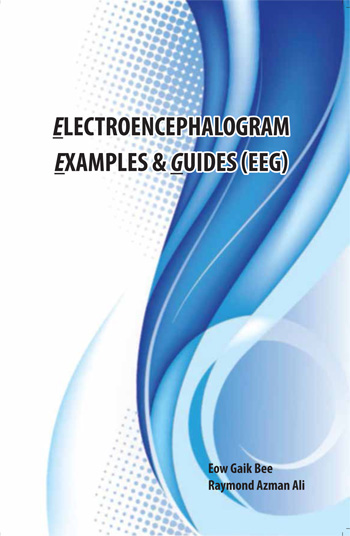 It is a privilege to introduce the book “Electroencephalogram Examples and Guides,” published in August 2013. The book provides a concise and comprehensive compilation of text and EEG recordings collected to shorten the learning curve toward competence in EEG interpretation.
It is a privilege to introduce the book “Electroencephalogram Examples and Guides,” published in August 2013. The book provides a concise and comprehensive compilation of text and EEG recordings collected to shorten the learning curve toward competence in EEG interpretation.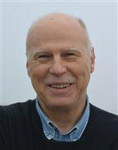
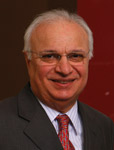
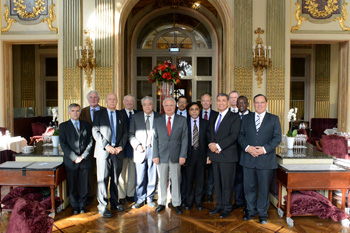
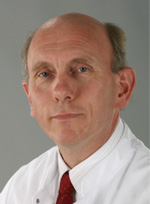
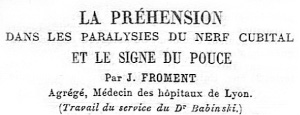
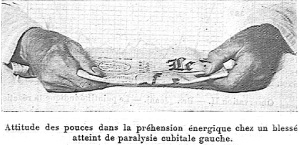
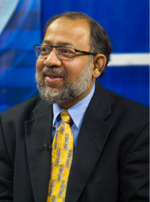

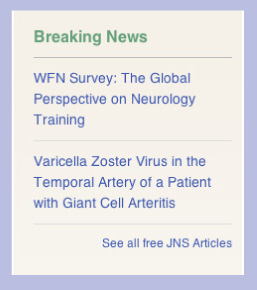 Elsevier already has introduced this feature, which is named “Your Paper Your Way (YPYW),” for several other journals in its portfolio. It has been so well received by authors that we will shortly begin offering this service to authors of manuscripts submitted to JNS. Taken together, these new options for manuscript formatting flexibility should make it easier for authors to submit manuscripts to JNS.
Elsevier already has introduced this feature, which is named “Your Paper Your Way (YPYW),” for several other journals in its portfolio. It has been so well received by authors that we will shortly begin offering this service to authors of manuscripts submitted to JNS. Taken together, these new options for manuscript formatting flexibility should make it easier for authors to submit manuscripts to JNS.